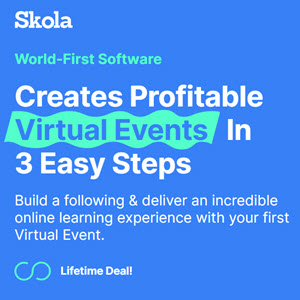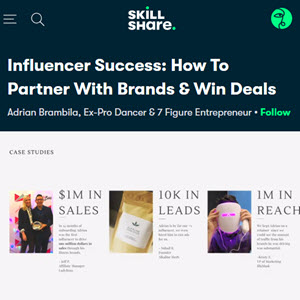Leading Trends in Event Marketing
Edward Cornish, editor of the Futurist magazine, believes that "on a day-to-day basis, the world changes so slowly that the best way to predict tomorrow is to say that it will be like today." However, although today's events may be used as a barometer to historically track developments and forecast trends, the professional event marketer must also keep his or her eye focused on the future needs, wants, and desires of event guests. By anticipating future needs, the event marketer can influence demand and fill those needs with events that are essential to human productivity and well-being. Figure 8-1 lists the ten leading trends in event marketing that will result from future lifestyle, demographic, and cultural changes.
The tragic events of September 11, 2001, forever changed the psyche of those who travel and gather for events. The resulting cancellations of events and downturn in attendance for those that were held in the weeks after the terrorist attacks compelled new strategies for event marketing. Event marketers must now be involved with issues of security, emergency planning, and rapid response to negative public reaction in times of national crisis. Critical to this is the need to put these issues in perspective for potential audiences and to reassure attendees that their security needs are being met. Safety and security have become part of the marketing message. Emphasis must be placed on the continuing need to gather, and to benefit from the experience of the event and the relationships developed with those who attend.
These trends represent hundreds of micro developments occurring on a global scale in the economy, in technology, and in lifestyles, including health and wellness. The experienced professional event marketer will continually monitor these trends and determine how to adapt his or her marketing plan and product/service to fill these future needs.
Influencer
Aging demographics
More disposable income
Improved technological delivery
Faster technology
New media outlets
New vocabulary
Emphasis on health benefits
Seamless registration
Multilingual communication
Terrorism alerts
Trend
Larger print will be used for brochures and other text.
The number of events before and immediately after the main event will be increased to capture more revenue while the guest is at the destination.
Video streaming on the World Wide Web will be used to demonstrate speakers, entertainment, recreation, and other benefits of attending the event.
Real-time registration will be available 24 hours a day, 7 days a week with instant confirmation and special financial benefits for early registration through yield management software.
Advertising will extend to nontraditional sites such as schools, clubs, offices, rest rooms, amusement parks, and other venues where guests may experience a wait time.
Copy writers will begin to use the slang and jargon practiced by visitors to chat rooms on the World Wide Web and will avoid "scammers" and "flamers" and embrace key buzz words popular within the netster generation.
As the population ages, the need for work/ vacations will increase. Therefore, event marketers will stress the health, recreation, and well-being aspects of the event.
Transportation, accommodation, registration, and ancillary tours will be available through central Web sites to capture as much revenue as possible from each individual guest.
Instant translation software will provide prospective event guests with a choice of languages to respond to the event offer and make registration and ticket sales a global enterprise with no barriers to non-English speakers.
Focus messages on safety and security where appropriate and emphasize the need to be there to benefit fully from the event.
Figure 8-1 A careful analysis of attendee needs and lifestyles, as well as the level of financial and sociopolitical resources represented, will directly influence the creation of precise marketing strategies.
|
Individual Event Marketing Methods | ||
|
Event Type |
Marketing Method |
Result (Return on Event Marketing Measurement) |
|
Convention |
World Wide Web |
Improved early registration and increased sales of other event products (such as tours, special events) through targeted marketing due to data base analysis. |
|
Festival |
Nontraditional media |
Use of doctors' offices, hospitals, and pharmacies to market health and wellness festivals, use of sport venues to market classical and other highbrow musical events will produce higher yield in ticket sales due to market segmentation and avoidance of clutter from other media as is typical with television, radio, and print advertising. |
|
Exposition |
Cooperative advertising |
Exhibitors will increasingly become co-marketers as well as event vendors to reduce cost, increase ability to target, and improve yield in attendance. |
|
Education |
Affinity marketing |
Alumni, friends of the university or school, and other stakeholders will become ambassadors or influencers to refer qualified prospective students or event attendees in order to provide strong third-party endorsement and reduce risk of attendee disappointment. |
|
Social |
World Wide Web and Telephony |
The World Wide Web will be used to promote attendance at a wide range of social events, the Web will be integrated with the telephone system to provide real-time chat capability at reduced cost, and the integration of the Web and television will allow event guests to preview, select, and then review activities taking place before, during, and after the event. |
Figure 8-2
The nature of the event itself may dictate the marketing methods selected. The event marketer will set a strategy of identifying avenues of communication and influence to attract attention and registrations.
Continue reading here: Event Marketing Books
Was this article helpful?

